Have you ever thought about what microservices are and how scaling industries integrate them while developing applications to comply with the expectations of their clients?
To obtain some insight, you need to first understand what monolithic applications are and how they are broken down into tiny micro applications that are packaged and deployed independently. This article will help you better understand how programmers use this technology to scale their applications to meet their requirements.
The following information is covered in this blog:
- Why are Microservices used?
- What exactly is Microservices?
- Differences Between Traditional Architecture and Microservices Architecture.
- Microservices Features.
- Advantages Of Microservices.
Why are Microservices used?
Microservices allow you to deploy independent services while overcoming the challenges of monolithic architecture, which previously dominated the market.
Therefore, let’s look at the Monolithic Architecture before moving on to what Microservices are in simple terms.
An application is referred to as monolithic if all of its functionalities are contained within a single codebase. In our lifetimes, we all must have designed a monolithic application where we were given a problem description and requested to create a system with different functionalities. We design our application in various layers like presentation, service, and persistence and then deploy that codebase as a single jar or war file. This is a monolithic application, where “mono” refers to a single codebase that contains all of the necessary functionalities.
Following are some of the challenges with monolithic architecture:
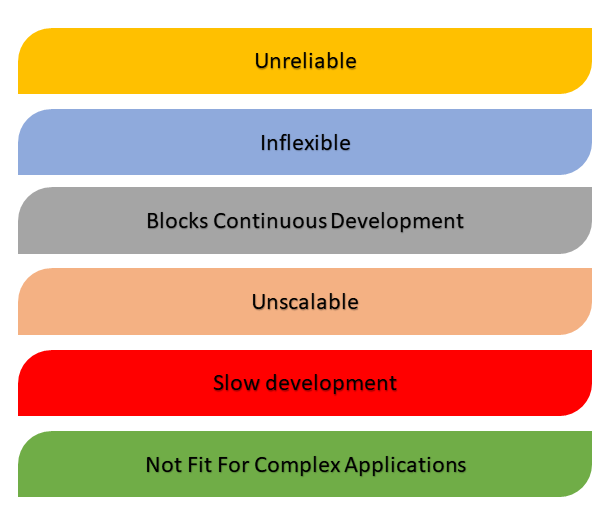
- Unreliable – If even one component of the system malfunctions, the system as a whole will also fail.
- Inflexible – Different technologies cannot be used to build monolithic applications.
- Blocks Continuous Development – Several application functionalities cannot be developed and deployed simultaneously.
- Unscalable – Applications are not easily scalable since every time they need to be updated, the entire system must be rebuilt.
- Slow development – Since every feature must be constructed one at a time, monolithic applications take a long time to develop.
- Not Fit For Complex Applications – Tightly connected dependencies are present in complicated application features.
The challenges listed above were the key factors that led to the evolution of microservices. Now let’s learn the definition of microservices in simple words.
What Exactly is Microservices?
Microservices is an architectural approach that organizes an application as a group of tiny autonomous services modeled around a business domain.
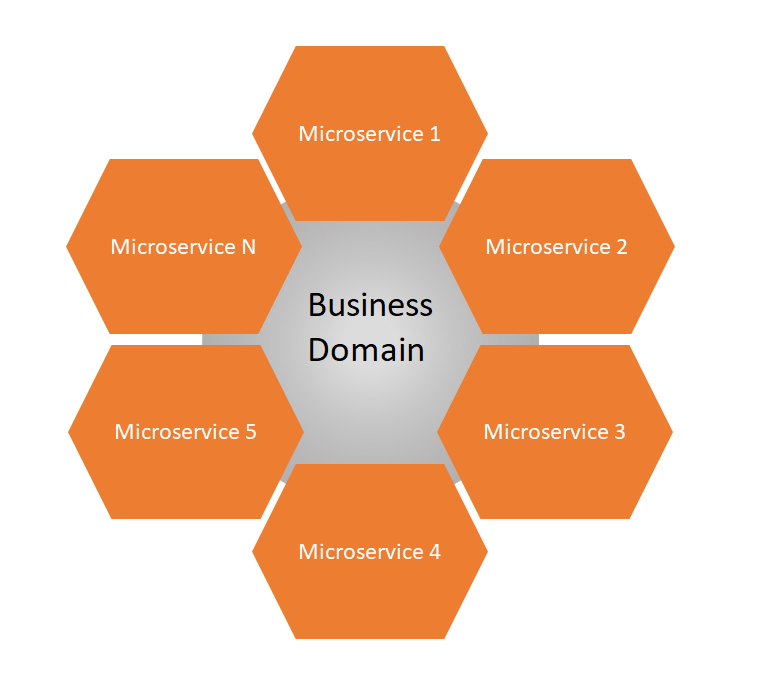
Each service in the given architecture implements a single business capability and is independent.
Differences Between Traditional Architecture and Microservices Architecture:
To understand the difference between Traditional monolithic Architecture and Microservices Architecture, let’s consider an E-commerce application as a use case.
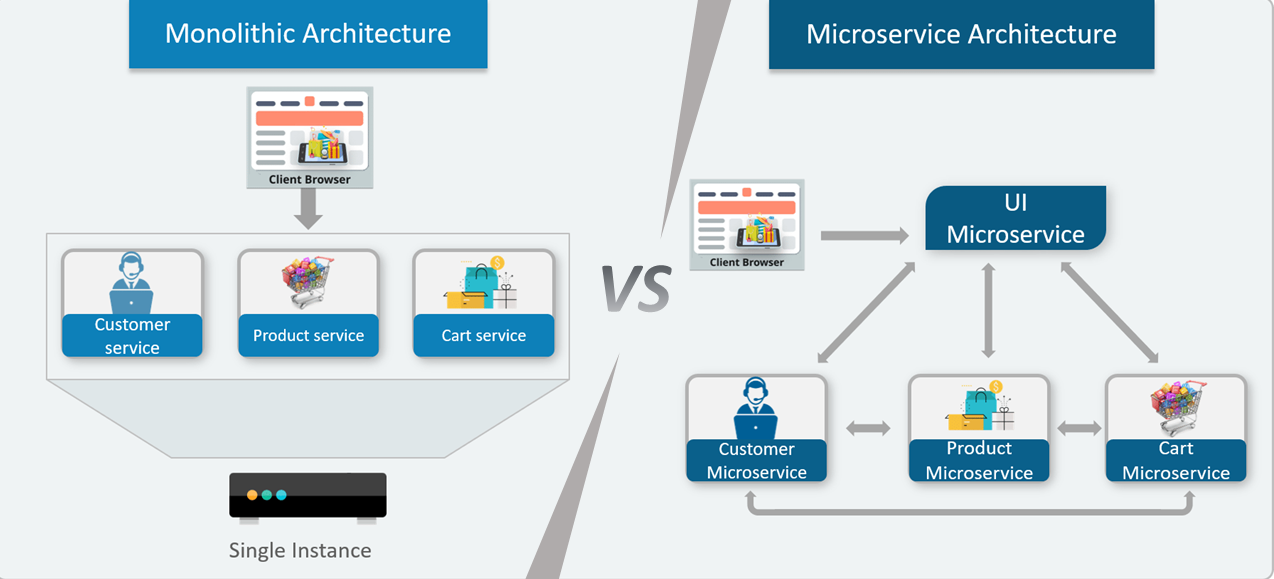
(Image referred from Edureka)
The primary difference in the figure above is that all the features formerly belonged to a single instance that shared a single database. However, with microservices, each feature was given a unique microservice that handled its data and carried out distinct activities.
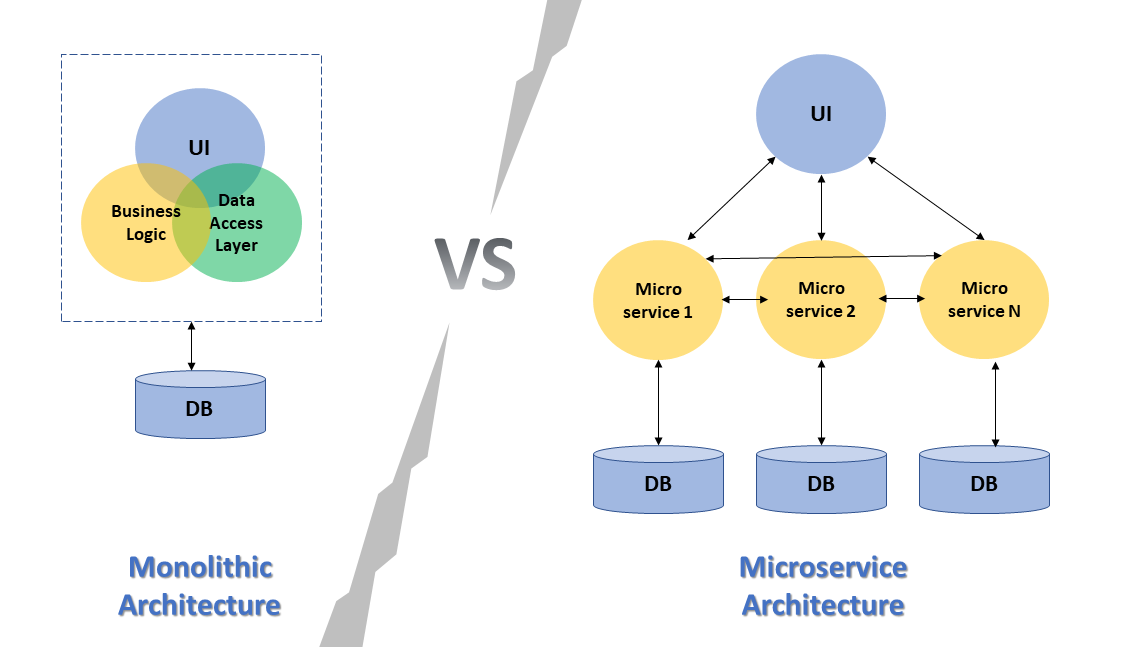
Let’s learn more about its architecture. Refer to the illustration below:
Architecture of Microservices:
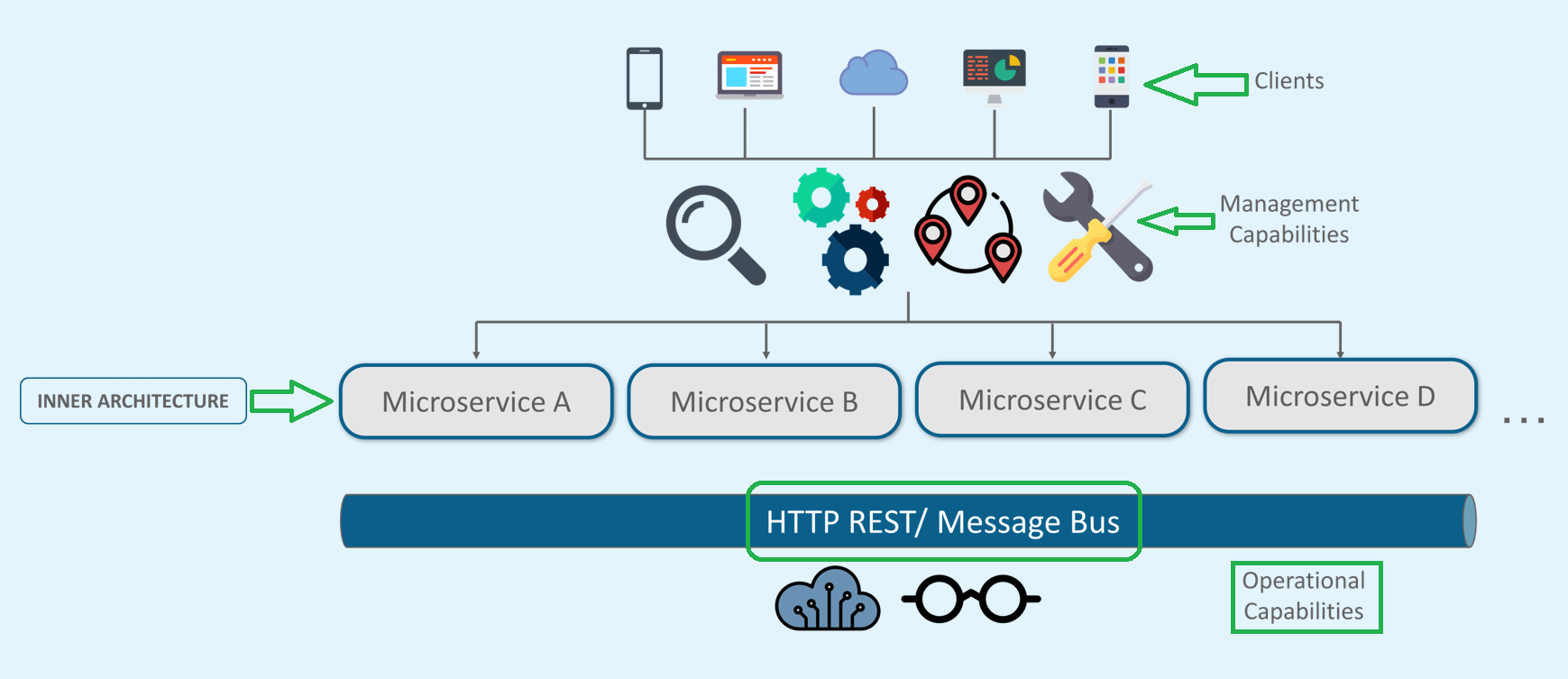
(Image referred from Edureka)
- Different clients and devices attempt to use different services, like search, build, configure, and other application capabilities.
- All services are divided into groups based on their functional areas and domains and then assigned to individual microservices.
- These microservices perform their functionalities in their own environments with their own load balancers, while simultaneously capturing data in their own databases.
- A stateless server that is either REST or Message Bus is used by all the microservices to connect with one another.
- With the aid of Service Discovery, microservices are able to execute operational functions like automation and monitoring.
- All the microservices functionalities are communicated to clients via API Gateway.
- The API Gateway connects all of the internal sites. Therefore, everyone who connects to the API Gateway also connects to the entire system.
Let’s now examine microservices features to understand more about them.
Microservice feature:
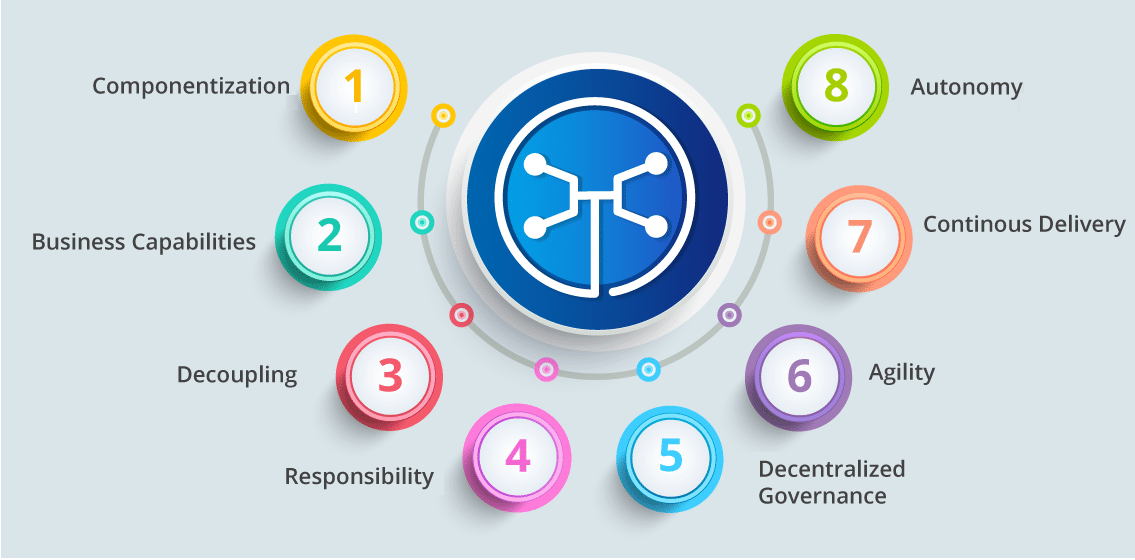
(Image referred from Edureka)
- Componentization – Microservices are recognized as independent components that are simple to upgrade and replace.
- Business Capabilities – Microservices are extremely straightforward and focus on a single capability.
- Decoupling – A system’s services are largely decoupled. As a result, building, modifying, and scaling the entire application becomes simple.
- Responsibility – Microservices don’t treat apps as separate projects. They approach applications as products for which they are responsible. Decentralized Governance: The emphasis is on selecting the best tool for the job. That means neither a standardized pattern nor a technology pattern exists. Developers have the freedom of selecting the best useful tools to solve their problems.
- Agility – Any new feature can be developed fast and discarded again.
- Continuous Delivery – Enables frequent software releases by systematically automating the development, testing, and approval of software.
- Autonomy – Developers and teams can operate independently of each other, thus increasing speed.
Advantages of Microservices:
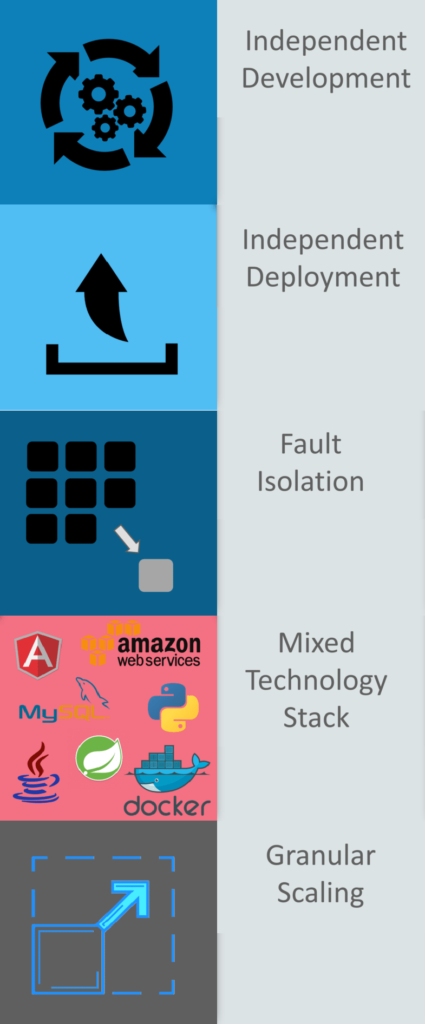
- Independent Development – Based on each microservice’s unique functionality, developing them becomes simple.
- Independent Deployment – They can be deployed independently in any application based on their services.
- Fault isolation – The system still functions even if one of the application’s services is down.
- Mixed Technology Stack – Mixed technology stacks allow distinct services of the same application to be built using a variety of languages and technologies.
- Granular Scaling – Individual components can scale as needed with granular scaling; scaling all components simultaneously is not necessary.
(Image referred from Edureka)
Conclusion:
In this article, you learned about what is Microservices, difference between Monolithic and Microservice architecture, features, architecture and advantages of microservices. I hope you enjoyed reading this post and found it to be useful.

